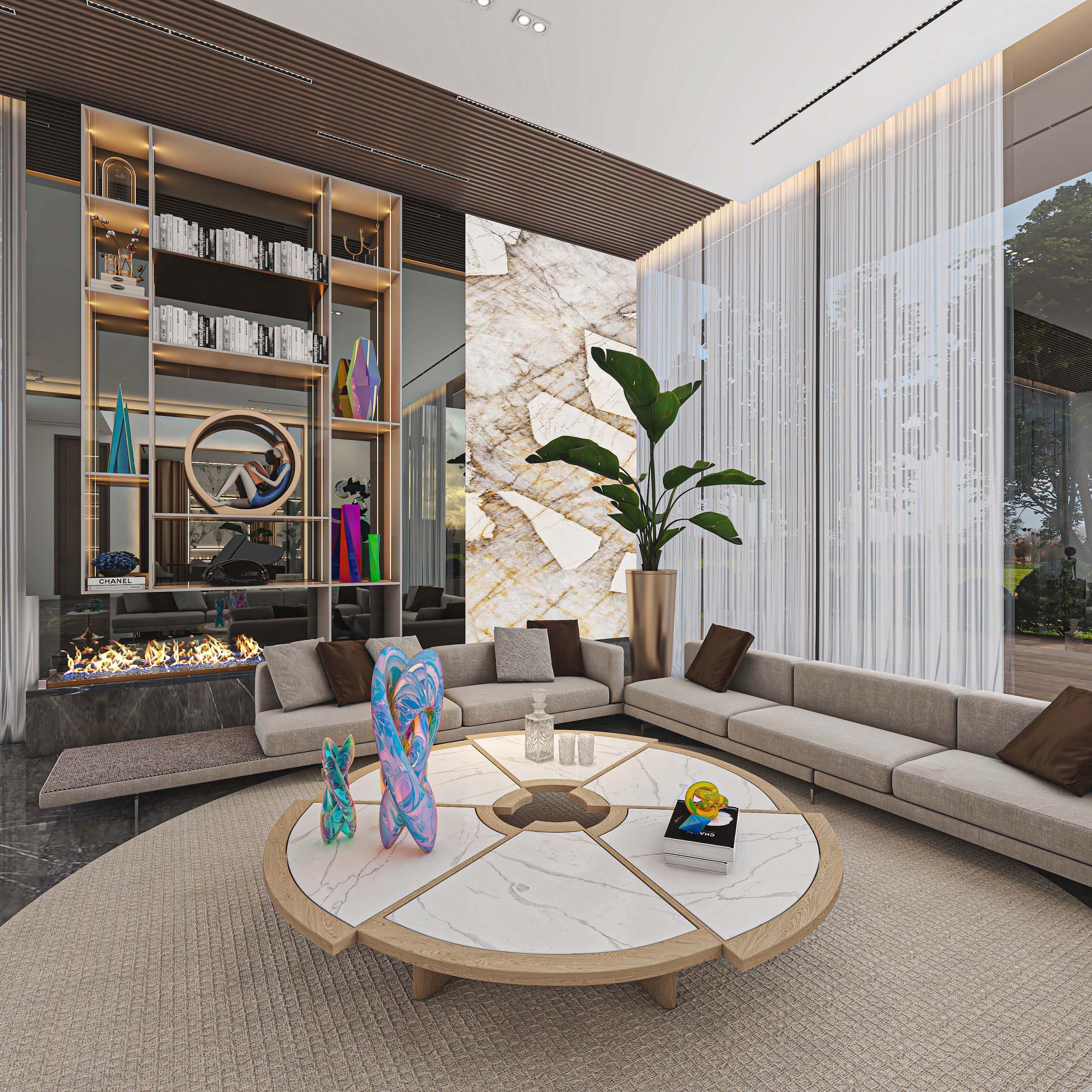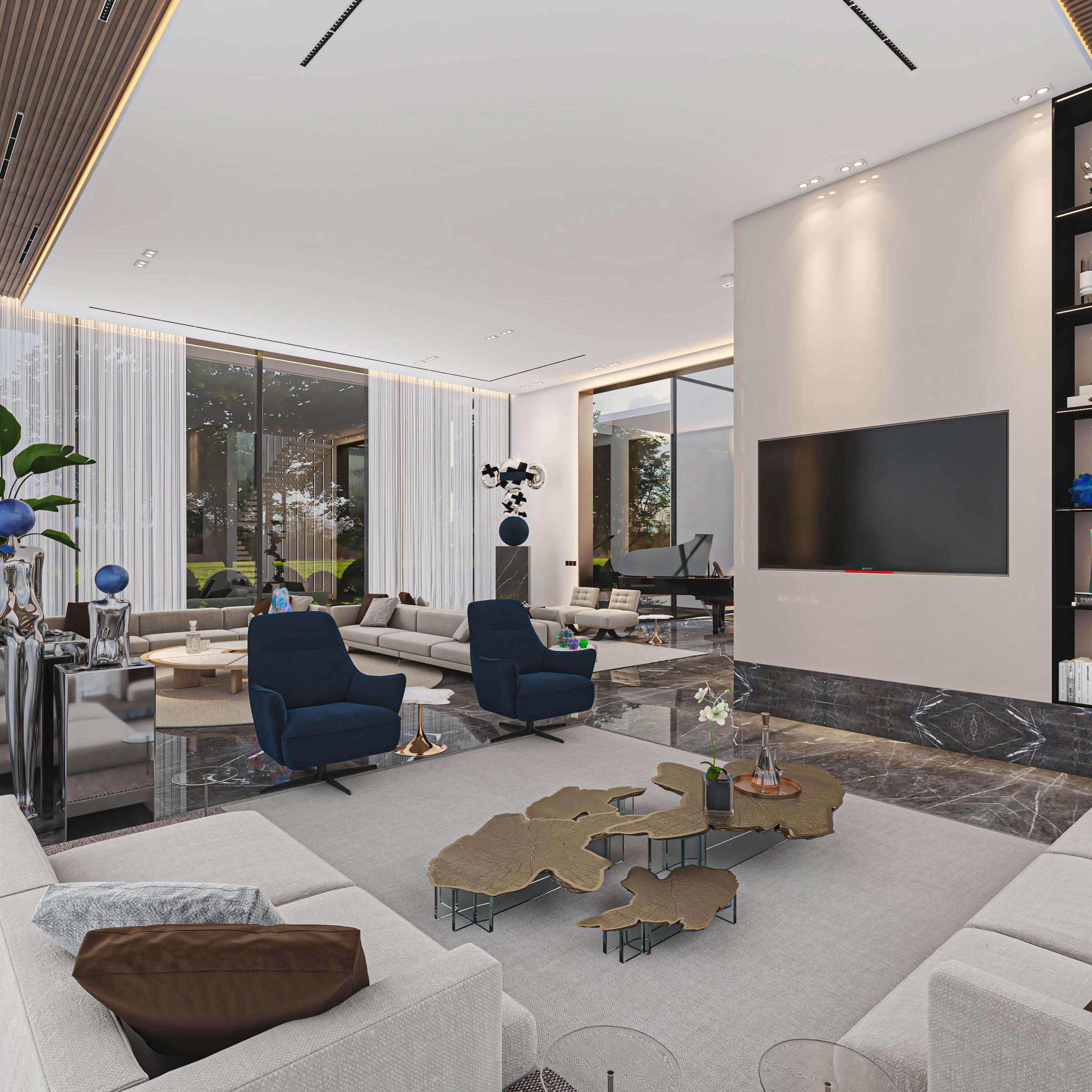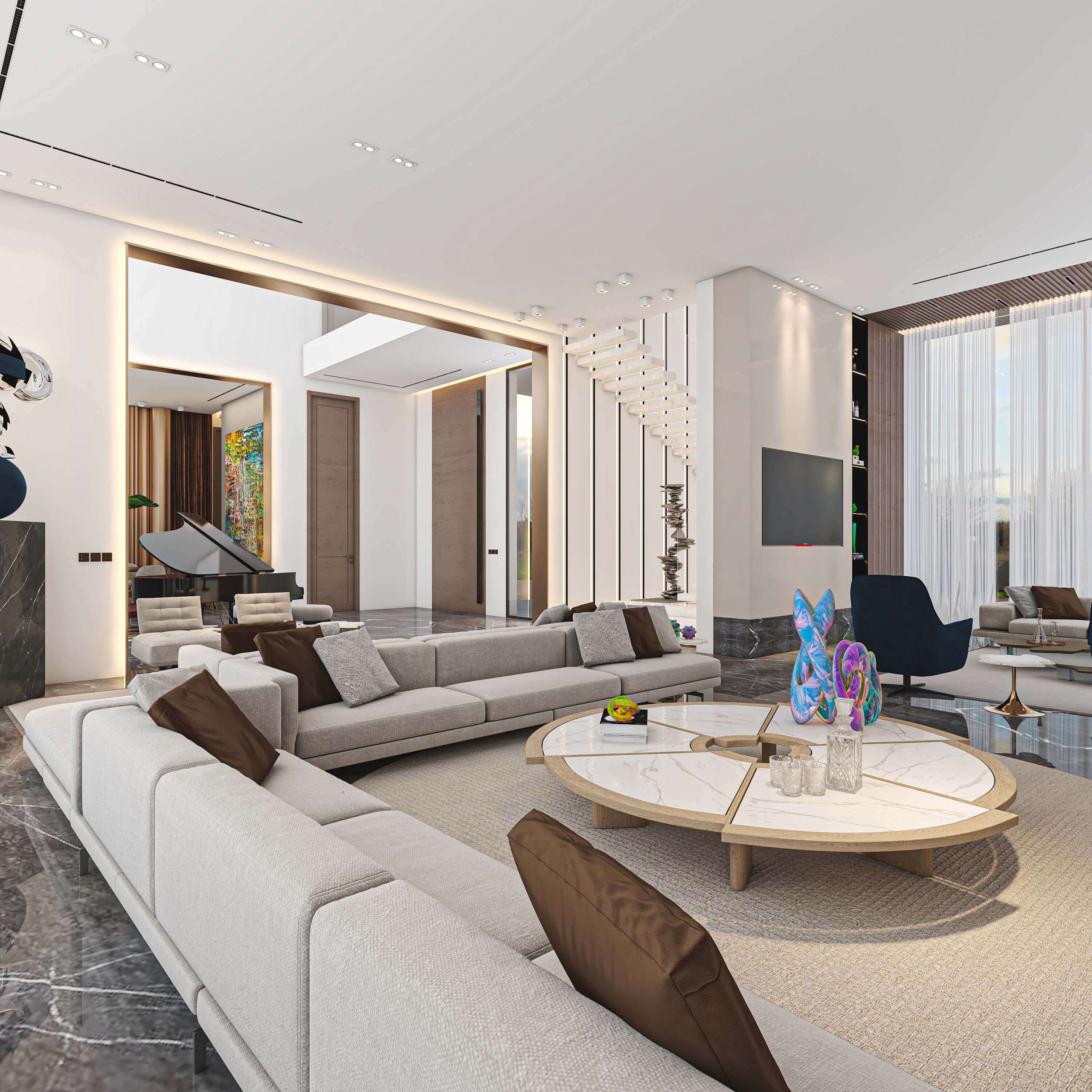Lifestyle
Round, Rectangular, or Ragged: Interior Architect Aly Hammoud and Choosing the Perfect Coffee Table

Saying “yes” to the right coffee table never gets any easier. An essential element of any well-thought-out living room, the choice often comes down to finding the right balance between form and function. Regardless of the designer’s direction with their space, choosing the right coffee table is a critical step toward achieving a cohesive and visually appealing interior design.
Designers must consider several factors when choosing a coffee table. First, the table size should be proportional to the size of the living room. A small coffee table in a large room will look out of place, and a large table in a small room will overwhelm the space. The table’s height is just as important. The ideal height typically falls between 16 and 18 inches, the same as most sofas. A coffee table that is too high or too low will prove uncomfortable for everyday use.

Designers must also consider shape, style, color, material, and space awareness. The table should complement the architecture of the room.
For example, round coffee tables are ideal for square rooms because they create contrast. It’s also important to consider the shape of the furniture, specifically the edges. A round coffee table would be an ideal fit for a living room where the sofa’s edges are also rounded.
The contrast in shapes, however, must be paired with coherence in materials. For example, if the furniture is made from mahogany wood, the table should reflect similar materials and hues. Different materials can be incorporated if the furniture contains metallic elements while considering the room’s overall coherence.
Space awareness is also essential to consider when choosing your coffee table. For instance, rectangular tables fit better in longer and narrower rooms because they don’t take up as much space as round or ragged tables. Suppose your room is spacious and wide enough. In that case, especially if it were an open studio, you can easily fit in round or ragged coffee tables, which are typically more challenging to style and arrange in certain spaces.

Most of the time, the table should match the space’s overall aesthetic. However, mixing elements and styles can help achieve a more dynamic finished product. Consider incorporating a mid-century coffee table in a room with more contemporary pieces or vice versa.
Ragged tables, however, are more sophisticated art pieces. Such tables don’t have a conventional shape, size, color, or edges. They can also have different and unique color patterns that must be mixed and matched professionally with your room’s overall aesthetic.
Of course, you can pick any type of coffee table that suits your needs and preferences in style and aesthetic. You need to make sure, however, that it is the ideal fit for the chosen room, furniture, style, and design. One way to do that is by choosing the right person for the job.

Coffee tables are an essential part of interior architecture. Not only do they function as practical surfaces for drinks and snacks, but they also contribute to the space’s general mood. Interior architects like Aly Hammoud understand coffee tables as powerful tools for tying a room together. They can create a focal point or complement other furniture pieces in the space.
Whether professional or amateur, the right designer should choose the coffee table carefully to ensure it fits seamlessly into the room’s overall design.
Check out Aly Hammoud’s Instagram account for more information.
Lifestyle
Behind the Scenes: A Conversation with Derik Fay – Sharing Stages with Legends and becoming one

In the bustling world of motivational speaking, where voices rise and inspire, one individual stands out: Derik Fay. Not just for his powerful messages, but for the remarkable journey that has placed him alongside some of the world’s most influential figures.
I recently had the opportunity to sit down with Derik Fay to delve into his experiences sharing stages with icons like Tony Robbins, Tim Grover, and a constellation of A list celebrity names.
“It’s been a surreal experience,” Fay began, a hint of awe still present in his voice. “To stand next to icons who have inspired millions, to witness their command of an audience, it’s a masterclass in itself.
Fay’s journey, as he describes it, is a blend of hard work, delusional confidence, genuine passion, and a relentless pursuit of connection.
“It’s not just about the name on the marquee,” he emphasized. “It’s about the shared energy, and the exchange of ideas. Whether it’s Kevin Hart’s comedic genius or Alex Rodriguez’s athletic drive, there’s something to learn from everyone I share the stage with.”
What struck me most during our conversation was Fay’s emphasis on authenticity. “I try to bring the same realness to the stage that I do in my online content,” he explained, referencing his popular Instagram reels and YouTube shorts.
“People connect with genuine emotion, with relatable stories. It’s about building a bridge, not just delivering a lecture.”
Fays direct, conversational style, which I’ve observed in his online content, and in our interview clearly translates to his live performances. “I’ve learned that vulnerability is a strength,” he shared. “Whether I’m talking about the challenges of fatherhood or the importance of emotional intelligence, I want people to walk away feeling seen and understood.”
Beyond the star-studded appearances, Fay sees his speaking engagements as a platform for positive change. “It’s about sharing insights that can make a real difference,” he told me.
“Whether it’s inspiring entrepreneurs to chase their dreams or helping individuals navigate difficult relationships, I want to leave a lasting impact.”
The lessons learned from sharing stages with these giants has undoubtedly shaped Fay’s approach. “I’ve absorbed so much from watching these masters at work,” he reflected. “It’s not just about the techniques, it’s about the passion, the commitment, the unwavering belief in the power of communication.”
As Derik Fay continues to grace stages around the globe, one thing is clear: his journey is a testament to the power of authentic connection and the enduring influence of shared experiences. And with each event, the legacy of these moments continues to grow, leaving an indelible mark on both the speaker and the audience.
-

 Tech4 years ago
Tech4 years agoEffuel Reviews (2021) – Effuel ECO OBD2 Saves Fuel, and Reduce Gas Cost? Effuel Customer Reviews
-

 Tech6 years ago
Tech6 years agoBosch Power Tools India Launches ‘Cordless Matlab Bosch’ Campaign to Demonstrate the Power of Cordless
-

 Lifestyle6 years ago
Lifestyle6 years agoCatholic Cases App brings Church’s Moral Teachings to Androids and iPhones
-

 Lifestyle4 years ago
Lifestyle4 years agoEast Side Hype x Billionaire Boys Club. Hottest New Streetwear Releases in Utah.
-

 Tech6 years ago
Tech6 years agoCloud Buyers & Investors to Profit in the Future
-

 Lifestyle5 years ago
Lifestyle5 years agoThe Midas of Cosmetic Dermatology: Dr. Simon Ourian
-

 Health6 years ago
Health6 years agoCBDistillery Review: Is it a scam?
-

 Entertainment6 years ago
Entertainment6 years agoAvengers Endgame now Available on 123Movies for Download & Streaming for Free
